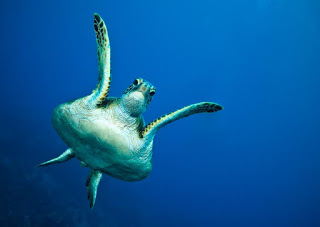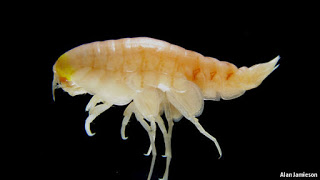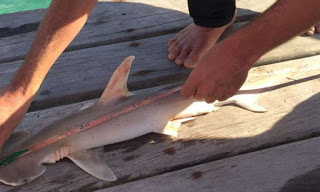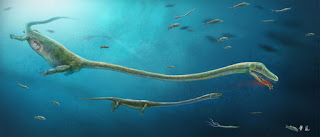1. Sea Turtles Numbers May Be Overestimated By a Factor of Two
Scientists studying green sea turtles have assumed that females lay 3.5 clutches of eggs per season. But a recent study suggests that they can lay twice that much per season. If true for all 7 species of sea turtles, it would mean scientists have been overestimating the entire sea turtle population. The study only tagged 18 turtles, and the number of clutches varied from 2 to 9, with an average of 6.
———————————————–
2. Deep Sea is Abundant in Bad Chemicals
The Mariana Trench is the deepest point on Earth. Its remoteness suggests that it is off limits to human’s touch, but scientists have found that it is not the case. Scientists collected amphipods, a small crustacean, from two trenches and found PCB levels to be “off the charts.”
———————————————–
3. New Hammerhead Shark Species Found in the Caribbean
A new species of bonnethead shark has been discovered by DNA testing. Bonnetheads are of “Least Concern” for extinction according to the international group, the IUCN. Previously believed to be widely distributed, a new species means that there could be two populations narrowly distributed. This would have conservation consequences.
20 million tons of fish are caught a year to be used in products not directly consumed by humans, such as fishmeal fed to farmed fish or land animals. This food grade fish is needed by 2.9 billion people in the countries that rely on fish as their main source of protein. There is also a trend to used a larger variety fish as many stocks have been over-fished.
———————————————–
5. Ancient Baby Sea Creature Found Inside Fossilized Mother
A 245 million year old fossil mother has been found with a fetus inside her. The Dinocephalosaurus fossil was found in China. Dinocephalosaurus was a long-necked reptile that gave live birth instead of laying eggs.
———————————————–
6. Wisdom the Albatross Has a Chick at 66 Years Old
Wisdom the Laysan albatross is the oldest known wild bird at 66 years old. She just hatched a baby chick, the second year in a row for her. Most female albatrosses lay one egg every other year. Wisdom lives on Midway Atoll in the Papahānaumokuākea Marine National Monument in Hawaii.
Be sure to “LIKE” http://facebook.com/SeaSave to ensure our “Week in Review” is delivered to your newsfeed every Friday.
Sea Save Foundation is committed to raising awareness of marine conservation. The Week in Review is a team effort produced by the Sea Save staff to provide a weekly summary of the latest in marine research, policy, and news.










